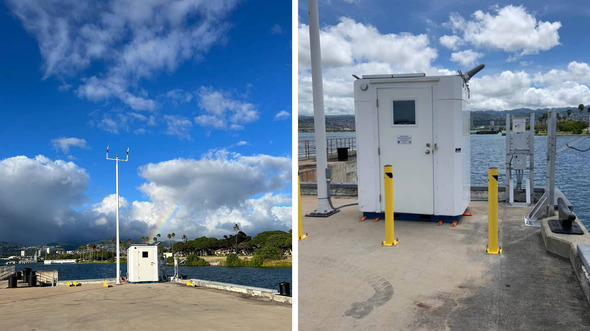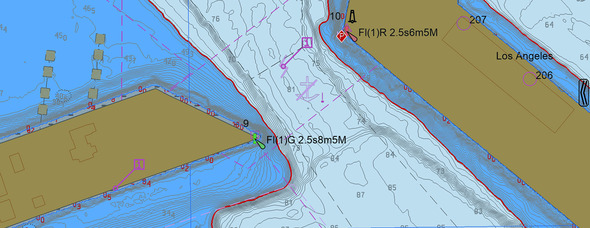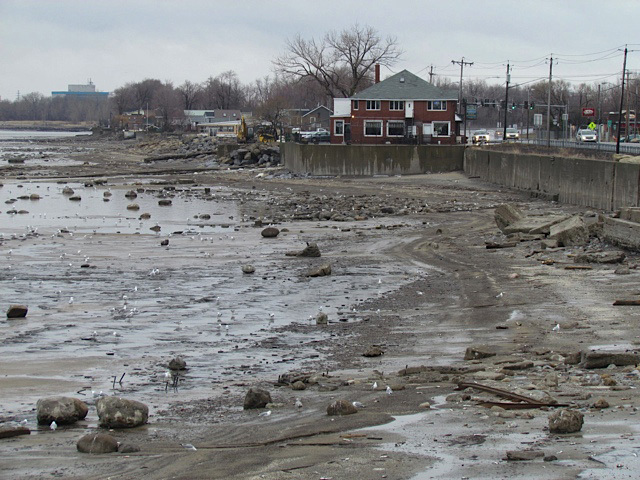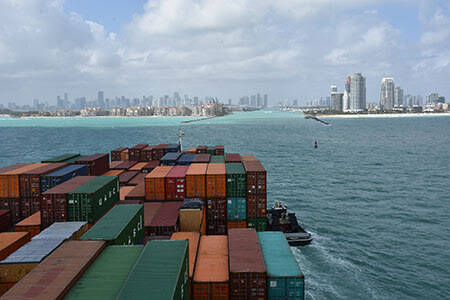National Ocean Service Strategic Plan now available On Monday, October 30, 2023, the National Ocean Service (NOS) unveiled its NOS Strategic Plan for Fiscal Year 2024-2028. The plan charts a future course as NOS continues to play a critical role in filling important needs for our Nation’s coastal communities, including climate change, declining ecosystems, and the ever-expanding need for authoritative environmental information. The plan lays out strategies, objectives, and outcomes within four priority areas: On Monday, October 30, 2023, the National Ocean Service (NOS) unveiled its NOS Strategic Plan for Fiscal Year 2024-2028. The plan charts a future course as NOS continues to play a critical role in filling important needs for our Nation’s coastal communities, including climate change, declining ecosystems, and the ever-expanding need for authoritative environmental information. The plan lays out strategies, objectives, and outcomes within four priority areas:- Increase Coastal Resilience in the U.S. NOS will improve its ability to meet its mission across timescales, enhance predictive capabilities, and focus on place-based partnerships and the unique needs of individual communities by expanding the use of NOAA’s Service Delivery Framework.
- Make Equity Central to Our Mission. NOS will amplify its external-facing efforts to equitably develop and provide their data, products, and services and will look internally to build and sustain a diverse, equitable, and inclusive organization accessible to all.
- Accelerate Growth of the Ocean Enterprise and the Blue Economy. NOS will enable businesses, governments, academia, and other organizations to use the vast collection of available ocean, coastal, and Great Lakes data and information to deliver innovative, value-added products and services to support the Blue Economy.
- Conserve, Restore, and Connect Healthy Coastal and Marine Ecosystems. NOS will apply its scientific understanding, resource management, and foundational observations to mitigate stressors, enhance degraded ecosystems, restore ecosystems and the benefits they provide, increase accessibility to historically underserved communities, and provide products and services that facilitate sustainable and equitable use.
The plan was developed using an all-hands-on-deck approach through engagement with the NOS workforce, NOS partners, stakeholders, and the public. View the full plan here. |
NOAA installs new water level station at Pearl Harbor
NOAA’s new water level station at Pearl Harbor, Hawaii will collect oceanographic and meteorological data. Under a partnership with the U.S. Navy, NOAA’s Center for Operational Oceanographic Products and Services has installed a new water level station in Pearl Harbor, Hawaii. The station is located near NOAA’s Inouye Regional Center and features microwave water level, wind, barometer, and air temperature sensors. During the install, NOAA field crew also performed geodetic leveling, took GPS observations, and laid five new benchmarks. Benchmarks are critical for verifying there is no vertical movement at a station and ensures that collected data comes from a stable sensor. This will enable NOAA specialists to generate data products with the highest confidence and accuracy possible. The Hawaii station will be integrated into the new Pearl Harbor Physical Oceanographic Real-time System, PORTS®, to deliver observations and predictions for oceanographic conditions in the area. Information provided will help improve safe navigation, support efficient naval operations, and advance the Center’s mission to provide reliable real-time data to the public, scientific, and maritime communities. View station data NOAA Custom Chart application updatesNOAA Custom Chart is a web-based application that can be used to generate a customized paper nautical chart product. The nautical charts generated from this application are created directly from the latest official data available within NOAA’s electronic navigational charts (NOAA ENC®). The output of the application is a geospatially referenced portable document format (PDF) file, which is intended to augment navigation using an actual NOAA ENC. They can also be used as a planning tool or to enhance overall situational awareness. Custom chart PDFs created for letter or legal-size paper can be printed on a home printer. PDFs for large format charts may be sent to one of these companies for plotting or printed through other commercial print shops. NOAA is actively making improvements to the NOAA Custom Chart application and just released several updates for the application. These changes are reflected in the Nautical Chart Display Service and are summarized below. - Soundings with a value of zero are now displayed as one-half-foot or one-twelfth-fathom values
- Linear cables and pipelines and their respective areas are now designated with paper chart symbols
- Depth contour labels with a value of zero (low water line) are removed
- Aids to navigation labels are now formatted similarly to a paper chart
- Landmark symbols are now designated with paper chart symbols and labels
- Navigable and non-navigable range lines are now designated with paper chart symbols
- Range light characteristics display all lights associated with the structure and reflect chosen units for heights
- Foul area symbols and labels are now designated with paper chart symbols
- Recommended courses on Great Lakes and the Intracoastal Waterway are now designated with paper chart symbols
- Water turbulence areas are now designated with paper chart symbols
NOAA is interested in hearing about users’ experiences and getting suggestions for additional enhancements. You can provide your input through Coast Survey’s online ASSIST customer feedback form. Improving current predictions and water level observations in the lower Columbia River
Far left: The RV Bailey in Astoria, Oregon ready to deploy a surface current meter (CURBY). Middle left: A CURBY deployed in the Columbia River. Middle and far right: Views of NOAA’s new water level station at Kalama, Washington. In 2023, the Lower Columbia River was abuzz with CO-OPS activity. Oceanographers and technicians completed long-awaited field work to install a new water level station and deploy temporary current meters. The work carried out by these teams will help NOAA’s Center for Operational Oceanographic Products and Services improve local water level observations and tidal current predictions needed to ensure safe navigation and efficient commerce. The fourth largest river in the United States by volume, the Columbia River is riddled with fast currents (reaching upwards of 5 knots) and 10-15 foot sand waves that course along the river’s bottom. For NOAA’s National Currents Observation Program, this combination makes the Columbia River one of the more challenging places to measure currents. Designing, constructing, and deploying the Columbia River current meter platforms required the combined effort and experience of 5 different NOAA teams specializing in tidal currents and sensor technology. Read more NOAA collects emergency response imagery following Hurricane Lee
This aerial image shows the area around Machiasport, Maine, following Hurricane Lee. The National Geodetic Survey (NGS) collected aerial images in the aftermath of Hurricane Lee. The crew flew more than 4,566 square kilometers and collected 1,482 images in 9.2 hours. The imagery was collected in specific, NOAA-identified, and Federal Emergency Management Agency-assigned areas in coordination with other federal agencies and impacted states. Aerial imagery is a cost-effective way to better understand both property and environmental damage. The imagery is used to determine the extent of flood and storm damage to major ports and waterways, coastlines, critical infrastructure, and coastal communities. NOAA’s aerial imagery also assists with safe navigation. NGS delivers the imagery through this website, which supports both the general public’s needs and advanced applications. Vessel pilots transition to new chart format
A screen capture of the SEAiq navigation application with S102 data, displaying 2-foot contours and a 55-foot safety contour. NOAA’s Precision Marine Navigation program aims to seamlessly integrate high-resolution bathymetry and high accuracy positioning and shoreline data with the forecast data of water levels, currents, waves, and weather forecasts. This information can be easily accessed and integrated into maritime electronic charting systems and other decision support tools so mariners can plan their transits and make decisions while at sea and coming to and from port. A key component of this program is providing vessel pilots with detailed depth information to ensure safety of vessel transits and that critical under keel clearance safety margins are maintained. An electronic navigational chart, although accurate, typically does not provide the detail that pilots prefer. In Long Beach, California, Jacobsen Pilot Service and SEAiq Pilot—a navigation system for pilots—have been working with NOAA for almost a decade to develop supplemental products that could fill this need of additional detail in navigation products. Read more Surge and Tide Operational Forecast System transitions to NOAA’s operational supercomputerNOAA is upgrading the Surge and Tide Operational Forecast System (STOFS) to version 2.1.0. The new release contains several enhancements improving model performance, resolution, and coverage. Upgrades to the global component (STOFS-2D-Global) includes a station bias correction and improvements to the model’s topography/bathymetry, mesh, and atmospheric forcing. Upgrades to the three-dimensional component for the Atlantic basin (STOFS-3D-Atlantic) include major improvements to the mesh in watersheds, usage of satellite altimetry data, and referencing the model to the geoid. A science brief of this new system was presented to the National Centers for Environmental Prediction on September 29 and approved to begin testing on NOAA’s Weather and Climate Operational Supercomputing System 2, for an anticipated operational start in December 2023. At the science brief, positive feedback was provided by Carnival Cruise Line on their use of STOFS. Also, NWPS, NWM, NWS forecast offices, and other users provided positive feedback and cited that they saw improvement in this STOFS upgrade. STOFS outputs are and will continue to be utilized as boundary conditions to inform NOAA’s new National Water Model version 3.0 and NOAA’s Nearshore Wave Prediction System managed by the National Weather Service on coastal conditions including water levels and currents. STOFS-3D-Atlantic uses the input from the National Water Model to include inland hydrology and extreme precipitation to significantly enhance NOAA’s coastal flooding prediction capabilities and navigation services. Updated low water alerts
Exposed lake bed during a seiche event on Lake Erie. Low water levels are an important factor in coastal hazards assessments and navigational safety. NOAA’s Center for Operational Oceanographic Products and Services (CO-OPS) continuously monitors water levels across the nation and issues high and low water condition alerts to notify coastal and maritime communities of potentially hazardous water levels. In response to user needs, CO-OPS recently improved how it issues low water condition alerts. Moving forward, CO-OPS plans to work with navigation stakeholders to establish low water thresholds that represent a potentially hazardous low water level in a particular area. Read more NOAA and US Army Corps of Engineers update Corpus Christi channel depths
An image of the oil tanker Cap Corpus Christi leaving the port of Corpus Christi with a 47-foot draft. Credit: Panos Pippos/Euronav The US Army Corps of Engineers recently deepened and widened 36 miles of channel near Corpus Christi, Texas, coordinating with NOAA to expedite channel depth updates on NOAA’s electronic navigational charts (NOAA ENC®). The port of Corpus Christi is ranked number one in the United States in total revenue tonnage (2022) and the deepened and widened channel will allow for two-way traffic and deep-draft vessels, including very large crude carrier ships, resulting in safer navigation and increased efficiency. With NOAA ENCs updated, crude oil carriers can now safely increase their draft and subsequently increase their loading of crude oil. This increase in a ship’s draft from 44.9 to 46.9 feet translates to an increase in barrel capacity from roughly 880,000 to 929,354 barrels. This difference of almost 50,000 barrels is worth approximately $3.9 million per shipment. NOAA coordinated with the US Army Corps of Engineers to update NOAA’s ENCs as quickly as possible in order to meet maritime needs and provide the most recent and accurate data to the public. Read more  SERVICE REMINDER—PORTS® Sunsets the Voice Data Response SystemOn September 15, 2023, NOAA’s Center for Operational Oceanographic Products and Services (CO-OPS) formally retired the Voice Data Response System for the Physical Oceanographic Real-Time System® (PORTS) and the Great Lakes. Telephone numbers and mention thereof were removed from these pages. All associated phone numbers have been released. The decision to retire the system followed a widespread 2022 outreach campaign to gather feedback on the product. It was determined that more than more than 90% of individuals polled did not use the system. These systems were stood up several years ago before more modern internet capabilities. Real-time PORTS data remains publicly accessible via the CO-OPS website here. |
|



Be the first to comment!